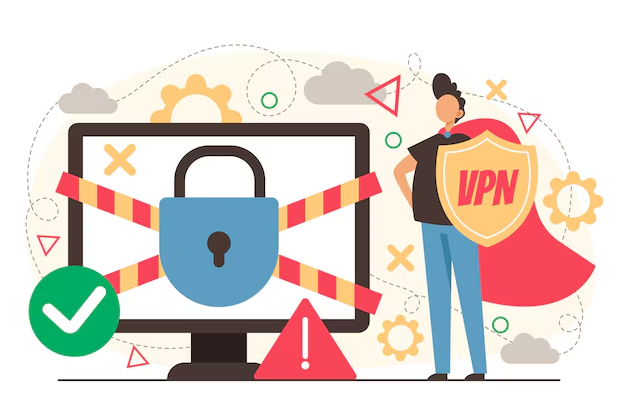Choosing the Right Penetration Testing Service Provider for Your Business
In the rapidly evolving landscape of digital threats, organizations must adopt robust strategies to safeguard their assets and sensitive information. With cyberattacks becoming increasingly sophisticated, engaging specialized expertise is critical to identify vulnerabilities and fortify defenses. This section explores prominent entities that excel in providing comprehensive assessments designed to uncover weaknesses and bolster security measures.
Through meticulous evaluation and simulated attacks, these companies empower clients to understand potential entry points that malicious actors could exploit. They bring a wealth of knowledge and technical skill, ensuring that businesses not only respond to existent threats but also proactively mitigate future risks. A partnership with qualified experts paves the way for a more resilient security framework, ultimately contributing to the long-term protection of valuable data.
As organizations seek to navigate the complexities of the cyber realm, determining the right partners to assist in this endeavor is essential. Various market players offer tailored solutions to meet specific needs, each equipped with unique methodologies and tools. Identifying leading firms in this space can help decision-makers make informed choices to safeguard their digital environments effectively.
Understanding the Importance of Penetration Testing
In an era where digital threats are becoming increasingly sophisticated, the need for proactive security measures has never been more critical. Organizations must take steps to identify vulnerabilities within their systems to safeguard sensitive information and maintain the trust of their customers. Engaging in simulated attacks can reveal weaknesses that may otherwise go unnoticed, allowing businesses to strengthen their defenses before actual breaches occur.
Key Benefits of Conducting Security Assessments
- Identify Vulnerabilities: Regular evaluations help uncover potential entry points that malicious actors could exploit.
- Improve Defenses: Insights gained from assessments enable organizations to fortify existing security protocols and tools.
- Compliance Requirements: Many industries have regulations requiring regular evaluations to ensure the safety of sensitive data.
- Enhance Incident Response: By understanding potential threats, companies can develop more effective response strategies.
Building a Security-Conscious Culture
Regularly engaging in simulated attacks not only benefits the technical aspects of security but also fosters a culture of awareness among employees. Continuous education about potential risks and safe practices is essential in creating a resilient organizational framework. The collective effort of well-informed staff and robust systems significantly reduces the risk of security incidents.
Leading Firms in Cybersecurity Assessments
In today’s digitally driven landscape, the importance of reliable evaluations to safeguard sensitive information cannot be overstated. Organizations worldwide seek expertise to uncover vulnerabilities and strengthen their defenses against evolving threats. Recognizing the significance of engaging specialized firms can significantly impact a business’s long-term security posture.
Pioneers in Security Evaluations
Several firms stand out for their proficiency in conducting comprehensive assessments. These organizations employ advanced methodologies and a wealth of experience to identify potential weaknesses and recommend tailored solutions. Their collaborative approach ensures that clients not only receive findings but also actionable insights that can be integrated seamlessly into existing protocols.
Key Attributes of Trusted Firms
When choosing the right partner for security evaluations, it is essential to consider their track record, depth of expertise, and client testimonials. Firms that prioritize continuous improvement and invest in cutting-edge technologies are more likely to deliver effective outcomes. Additionally, those that foster transparent communication and collaboration throughout the assessment process tend to build stronger, more resilient relationships with their clients.
Key Features to Look For in Services
When evaluating various cybersecurity offerings, it is essential to identify the fundamental characteristics that contribute to effective risk management and protective measures. These elements serve as a foundation for robust security protocols, ensuring that organizations can identify vulnerabilities and mitigate potential threats. Understanding these vital features will enable businesses to make informed decisions when selecting appropriate solutions.
Comprehensive Approach
A well-rounded cybersecurity package should encompass a variety of methodologies and tools to address different aspects of security. A multifaceted strategy not only enhances the detection of weaknesses but also facilitates a proactive stance toward safeguarding sensitive data.
Expertise and Experience
Ensure that the professionals behind the services possess a diverse skill set and significant knowledge acquired through years of experience. Their background in various industries and security challenges will play a critical role in delivering tailored solutions that meet specific organizational needs.
| Feature | Description |
|---|---|
| Customization | Services should be tailored to fit the unique environment and requirements of the organization. |
| Reporting | Clear and detailed reporting on findings and recommendations is crucial for understanding risks. |
| Communication | Regular updates and open communication channels foster a collaborative partnership. |
| Follow-up Actions | Post-engagement support and follow-up assessments ensure continuous improvement. |
Case Studies of Successful Penetration Tests
Examining real-world instances of security assessments reveals invaluable insights into how organizations effectively safeguard their digital environments. These scenarios illustrate the challenges faced, methods employed, and results achieved during security evaluations, emphasizing the critical role of proactive measures in protecting sensitive information.
Financial Sector Success
One notable example comes from a leading financial institution that sought to identify vulnerabilities within its online banking platform. The assessment revealed several critical weaknesses that could have led to unauthorized access and data breaches. The approach and subsequent findings were as follows:
- Initial Assessment: A thorough evaluation of the system architecture, including infrastructure and application components.
- Exploitation Phase: Simulated attacks were conducted to test the robustness of security measures in place.
- Reporting: Detailed feedback was provided, highlighting vulnerabilities and suggested remediation strategies.
As a result of these measures, the institution fortified its defenses, implemented new security protocols, and significantly reduced the risk of future threats.
Retail Industry Achievement
Another compelling case occurred within a prominent retail organization, which aimed to assess potential weaknesses in its e-commerce platform. The project focused on protecting customer data and ensuring PCI compliance. The process included:
- Scope Definition: Identification of critical assets and delineation of the assessment boundaries.
- Risk Assessment: Analysis of potential threats and the likelihood of their occurrence.
- Follow-Up Actions: Implementation of recommendations provided, including software updates and enhanced monitoring systems.
This initiative led to improved security measures, a boost in consumer confidence, and a notable decrease in security incidents, proving the importance of continuous vigilance in the digital sphere.
Comparing Pricing Models of Providers
When selecting a cybersecurity partner, understanding the various pricing structures available is crucial. Each organization has its own approach to cost, which can significantly impact your budget and the overall value you receive. By comparing these models, businesses can make informed decisions that align with their specific needs.
| Pricing Model | Description | Benefits |
|---|---|---|
| Hourly Rate | Providers charge based on the number of hours spent on the engagement. | Flexibility in scope and control over expenses. |
| Fixed Fee | A pre-agreed cost for a defined set of services. | Budget predictability and clarity on deliverables. |
| Subscription-Based | A regular payment schedule for ongoing support and services. | Consistent assistance and updates without unexpected costs. |
| Performance-Based | Cost is linked to the outcomes achieved, such as vulnerabilities identified. | Alignment of provider incentives with client goals. |
| Project-Based | Payment is made for a specific project or engagement with defined milestones. | Focus on project completion and specific requirements. |
Comparing these various pricing strategies allows organizations to assess which model best meets their operational requirements and financial constraints. Making an educated choice not only ensures a better fit but also maximizes the investment in security solutions.
Future Trends in Cyber Defense Strategies
The landscape of digital security is evolving rapidly, driven by advancements in technology and the increasing sophistication of threats. It is essential for organizations to stay ahead of the curve by adopting innovative approaches that anticipate future challenges. This section delves into emerging trends and methodologies that are likely to shape the next generation of defensive measures.
Integration of Artificial Intelligence
Artificial Intelligence (AI) is poised to revolutionize protective measures. Machine learning algorithms can analyze vast amounts of data to identify patterns indicative of potential threats, enabling real-time responses that were previously unattainable. As AI continues to improve, its role in automating defensive actions and streamlining incident response is expected to expand significantly.
Emphasis on Proactive Defense Mechanisms
Rather than solely reacting to incidents, future strategies will focus on proactive methodologies that aim to prevent breaches before they occur. This involves continuous monitoring, threat hunting, and regular assessments of vulnerabilities. Organizations will increasingly invest in resilience planning to ensure robust defenses against evolving tactics employed by malicious actors.
| Trend | Description |
|---|---|
| AI Integration | Utilizing machine learning for threat detection and automated responses. |
| Proactive Measures | Focusing on prevention and resilience rather than reaction. |
| Cloud Security Enhancements | Strengthening defenses for increasingly popular cloud environments. |
| Zero Trust Architecture | Adopting a policy of never trusting, always verifying user access. |
Q&A: Penetration testing service provider
What is pen test and why is it important for organizations?
Pen test, or penetration testing, is a simulated cyber attack on a system or application to identify vulnerabilities. It is important because it helps organizations assess their security posture and fix potential weaknesses before they can be exploited by cyber threats.
How can a penetration testing company enhance an organization’s security measures?
A penetration testing company provides expert assessments of security vulnerabilities in systems, applications, and networks. They offer insights and recommendations to strengthen defenses, ensuring that organizations are better protected against cyber attacks.
What are the primary objectives of security testing in software development?
The primary objectives of security testing in software development are to identify vulnerabilities, ensure compliance with security standards, and validate the effectiveness of security controls, thereby protecting sensitive data from potential breaches.
What is the significance of application security in today’s digital landscape?
Application security is critical in today’s digital landscape as it focuses on safeguarding applications from threats throughout their lifecycle. This is vital for protecting user data and maintaining trust in software products.
How does cloud penetration testing differ from traditional penetration testing?
Cloud penetration testing specifically targets cloud-based environments and applications, assessing unique security challenges and configurations. In contrast, traditional penetration testing focuses on on-premises systems and networks.
What is involved in application penetration testing?
Application penetration testing involves simulating attacks on web applications to identify vulnerabilities such as SQL injection, cross-site scripting, and insecure API calls. This helps ensure the application is secure before it goes live.
What are the benefits of conducting external penetration testing for a business?
External penetration testing provides businesses with insights into how their systems can be accessed from outside the network. It helps identify vulnerabilities that could be exploited by malicious actors, allowing for timely remediation.
Who are pen testers and what role do they play in cybersecurity?
Pen testers, or penetration testers, are security professionals who perform simulated attacks on systems and applications to identify vulnerabilities. They play a crucial role in enhancing an organization’s security posture by providing actionable insights.
What is the role of cyber threat intelligence in penetration testing?
Cyber threat intelligence informs penetration testing by providing insights into the latest vulnerabilities, attack methods, and threat actors. This helps pen testers tailor their assessments to address current and emerging threats effectively.
What are the key considerations when selecting the best penetration testing services?
When selecting the best penetration testing services, organizations should consider factors such as the provider’s expertise, reputation, methodologies, compliance with standards, and the comprehensiveness of their reporting and follow-up support.
What are the top penetration testing companies known for in 2024?
The top penetration testing companies in 2024 are recognized for their expertise in identifying security vulnerabilities, providing comprehensive testing services, and offering tailored solutions to enhance organizations’ cybersecurity posture.
What types of cybersecurity services do penetration testing companies provide?
Cybersecurity services offered by penetration testing companies typically include vulnerability assessments, application security testing, internal and external penetration testing, compliance testing, and security consulting to help organizations mitigate risks.
Which are the leading testing companies in the USA for penetration testing?
Leading testing companies in the USA for penetration testing include names like BreachLock, Trustwave, and Offensive Security, known for their innovative approaches and strong track records in cybersecurity.
What is involved in application security testing during a penetration test?
Application security testing during a penetration test involves evaluating web and mobile applications for vulnerabilities, such as SQL injection and cross-site scripting, ensuring that the applications are secure against potential threats.
What are the different types of penetration testing that companies can choose from?
Companies can choose from various types of penetration testing, including internal penetration testing, external penetration testing, web application testing, wireless penetration testing, and social engineering assessments to comprehensively evaluate their security.
What are the benefits of utilizing managed security services for penetration testing?
Utilizing managed security services for penetration testing provides organizations with continuous monitoring, expert analysis, and timely incident response, ensuring that security vulnerabilities are identified and addressed promptly.
What should organizations consider when selecting a penetration testing company?
Organizations should consider the experience of the penetration testing company, the range of services offered, compliance with industry standards, customer reviews, and the methodologies used for testing when selecting a provider.
What does penetration testing as a service entail for businesses?
Penetration testing as a service entails a subscription-based model where businesses can regularly access penetration testing services, allowing for continuous assessment of their security posture and timely identification of vulnerabilities.
What is the role of penetration testing providers in enhancing cybersecurity?
Penetration testing providers play a crucial role in enhancing cybersecurity by conducting thorough assessments of systems and networks, identifying weaknesses, and offering actionable recommendations to strengthen security measures.
How does wireless network penetration testing differ from traditional methods?
Wireless network penetration testing specifically focuses on assessing the security of wireless networks, identifying vulnerabilities such as weak encryption and unauthorized access points, whereas traditional methods often target wired network infrastructures.


